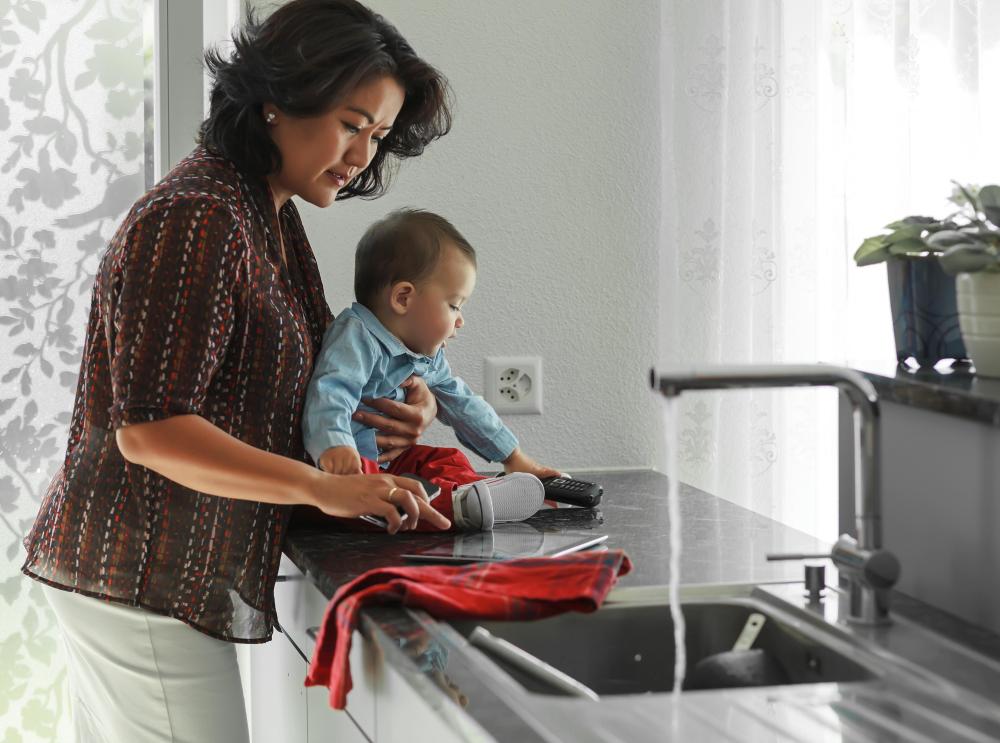At SmartCapitalMind, we're committed to delivering accurate, trustworthy information. Our expert-authored content is rigorously fact-checked and sourced from credible authorities. Discover how we uphold the highest standards in providing you with reliable knowledge.
What is a Microfinance Bank?
A microfinance bank is one devoted to extending small loans, referred to as microloans, to individuals, businesses, and organizations in low-income regions, including under-developed countries where small amounts of money can go a long way. Some financial institutions are devoted entirely to microfinance, while others are part of larger companies, such as global investment banks. Ultimately, this type of bank provides credit to those who would otherwise be unable to access this form of capital. These loans foster the development of small businesses and provide tools to entrepreneurs to follow their dreams, all in an attempt to alleviate global poverty in vulnerable regions.
In most cases, a microfinance bank is involved in social investing — that is, fostering the growth and economic development in a vulnerable region by extending loans to families, businesses, and entrepreneurs. These financial institutions still intend on generating profits from a microfinance investment, but also take an interest in the social development of a poverty-stricken place. In the process, the bank lends its financial expertise, business resources, and relationship skills to underprivileged areas in addition to financial support.

The history of microfinance begins with one man and one village. Grameen Bank was the first microfinance bank, and it was established by Muhammad Yunus, a native of Bangladesh. He was motivated by the fact that Bangladeshi business owners were forced to repay much of their profits to loan-issuers. In 1976, Yunus extended his first microfinance loan from his personal account to a group of women in a Bangladeshi village, and the concept grew from there. His intentions were not to gouge the borrowers, but instead to provide them with reasonable funding on terms that would not cripple them financially but instead foster growth.

Microfinance loans are designed for providing financing to the most underprivileged regions in the world, including sub-Saharan Africa and the Democratic Republic of Georgia, where pockets of the population might otherwise have no access to any sort of banking institution. In addition to small loans, individuals gain support, including education and training for personal development, in addition to savings and insurance products. The purpose is to break the cycle of poverty in a region.

Loans for women living in poverty are among the most widely-issued forms of credit in microfinance. This is because 70% of the world's population struggling through extreme-poverty conditions are women, according to Opportunity International, a US-based non-profit organization that works with microfinance lenders. A woman is less likely to receive formal education, business training, or a prominent role in society in an underdeveloped region, and without proper financial support, she may never overcome those obstacles.
AS FEATURED ON:
AS FEATURED ON:















Discussion Comments
@Submariner- I also wanted to point out that women benefit from microfinance incredibly. It is not a perfect system, but microfinance institutions (the good ones) are helping empower women across the globe. In many of the countries where you find microfinance programs, women hold less power than men do. The loans do help educate, employ, and emancipate women from oppressive situations.
The main caveat about microfinance is that it cannot function sustainably as a standalone social program. It cannot be a solution for a state to reduce social welfare programs that help the poor, because then it only serves the purpose of driving people deeper into poverty.
If you really want to invest, look for a non-profit organization that only keeps a small percentage of its income for expanding microfinance opportunities. Try to find banks that are operationally efficient, and check reviews on independent microfinance rating sites.
@submariner- While I agree with you that microfinance banks have received a bad rap as they have become more commercialized lately, the truth is there are still some very good microfinance banks. Grameen Bank is still a very good microfinance lender, and they offer interest rates that are fair. Banks like Grameen have the power of years of experience, economics of scale, and a very lean operating system. They do not suffer from inefficient and expensive operating structures that plague a number of microfinance banks that reach the poorest people. Some of these banks must pay for generators and fuel just to keep the bank running.
I guess what I am getting at is that these banks are not all bad. There certainly are some bad apples, and there are more banks in it for profit than the non-profits that dominated the scene a decade ago, but the number of bad banks is more around 10%. This does not represent the majority. Do your research before you invest and you can find a good microfinance bank that will help a lot of people.
It seems like micro finance programs are great at first glance, but what I do not understand is why the interest rates on the loans are so high. How are poor people supposed to be making money and pulling themselves out of poverty with these loans if they are paying interest rates in the 80-120% range? I find it ridiculous that these loans are not regulated to the point that banks like Deutsche (one of the world’s largest) and other giants in Peru, Mexico, and Nigeria are raking in huge profits on the backs of the world's most destitute.
I have thought about making an investment in these micro finance programs just because I think that poor people should have access to capital. However, I cannot bring myself to give my funds to a bank that is simply trying to make huge profits off of those I am trying to help. I know that not all micro finance banks are like this, but I almost feel as if giving my money to charity is a better option.
Post your comments